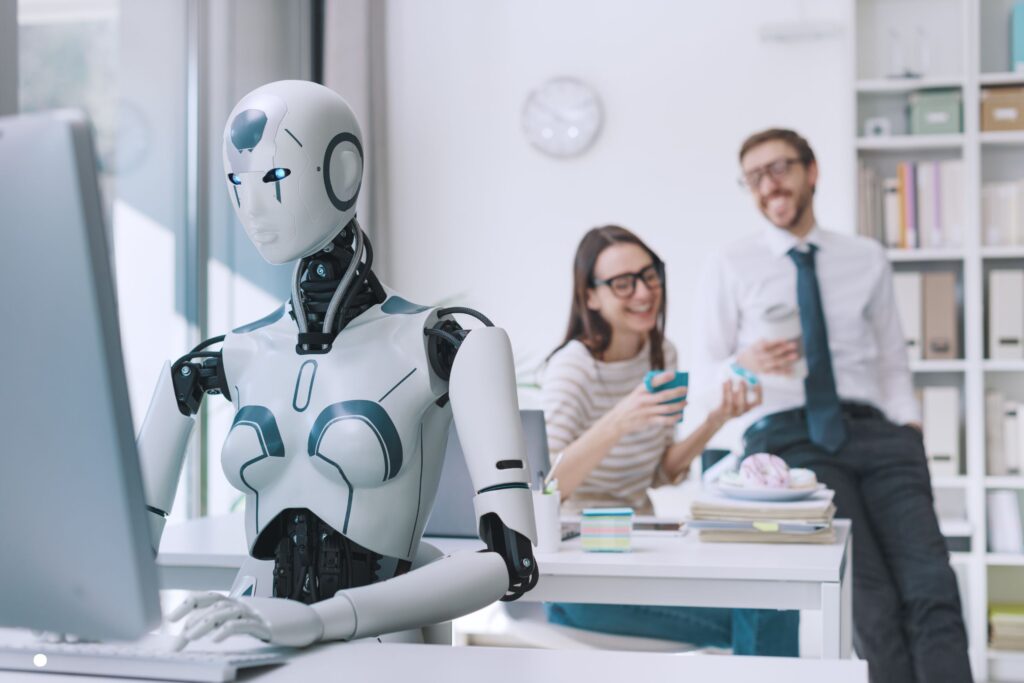- +447774687764
- support@carenetsolutions.co.uk
- 37, Brickcroft Hoppit Newhall CM17 9FJ, UK
Categories

How AI Is Transforming User Behaviour and Killing Old CRO Tactics
The Rise of AI and Its Impact on User Intent
In today’s digital landscape, artificial intelligence (AI) is not just a trend — it’s a seismic force reshaping how users interact with websites, brands, and digital experiences. Traditional Conversion Rate Optimisation (CRO) strategies that once relied on static A/B testing and linear user journeys are fast becoming obsolete.
AI has redefined user behaviour patterns. Through machine learning, predictive analytics, and automation, it interprets, anticipates, and even influences user intent in real-time. This evolution demands a fundamental rethink of CRO frameworks that can no longer rely on one-size-fits-all tactics.
Dynamic Personalisation: AI’s CRO Game-Changer
One of the most transformative elements of AI is its ability to enable dynamic personalisation. Unlike traditional segmentation that groups users based on static attributes, AI can analyse real-time behavioural data and adjust website content, layout, and offers instantly. How Generative AI Is Giving Businesses a Competitive Edge
Key examples of dynamic personalisation:
- AI-driven product recommendations on e-commerce platforms based on micro-interactions.
- Chatbots and virtual assistants that adapt responses based on prior user behaviour.
- Landing page variations tailored to individual browsing history, device, and intent.
Personalisation powered by AI significantly reduces bounce rates, increases session duration, and boosts conversion rates, making legacy CRO tactics that rely on static testing appear outdated and ineffective.
Behaviour Prediction and Intent Recognition
AI systems, especially those utilising Natural Language Processing (NLP) and deep learning models, are capable of predicting user intent with incredible accuracy. By examining past actions, time on site, scroll patterns, and even mouse movements, AI can forecast what users are likely to do next. How to Choose the Right Digital Marketing Agency in the UK
This level of insight transforms how we approach CRO. Instead of reacting to user behaviour after it happens, we can now proactively design user journeys that align with their predicted needs.

Tools leading the charge:
- Google Analytics 4 with AI-powered predictive audiences.
- Hotjar and Crazy Egg offer heatmaps enriched by machine learning.
- Segment and Amplitude, which track real-time user flows, are enhanced by AI tagging.
The Death of Traditional A/B Testing
A/B testing has been a staple of CRO for over a decade, but its limitations are increasingly apparent in an AI-driven era. These tests:
- Require long timeframes for statistical significance.
- Assume static user segments.
- Cannot react to shifts in real-time behaviour or market trends.
AI has introduced multivariate and adaptive testing, which evolves continuously. Algorithms test hundreds of variables simultaneously, rapidly learning what converts best across different audiences and touchpoints — often without human intervention. CareNet Solutions – Your helping partner in growing your online business.
Voice Search and Conversational UX
The proliferation of voice-activated search and AI-driven conversational interfaces has changed how users access content. As devices like Alexa, Siri, and Google Assistant become more prevalent, users expect immediate, natural-language responses rather than sifting through multiple links.
This shift impacts CRO in several ways:
- Content structure must now answer voice queries directly and succinctly.
- Conversational UX design is essential for chatbots and in-app experiences.
- Keyword strategies must shift from short-tail to long-tail conversational queries.
Ignoring this behavioural change can significantly damage CRO performance, especially on mobile and voice-first platforms. Learn Growth Hacks for Startups Using Digital Marketing
AI-Powered UX Enhancements
Beyond analytics and personalisation, AI is revolutionising User Experience (UX) by enabling real-time optimisations that were once only possible through developer intervention. AI can:
- Auto-adjust website layout based on user device, location, and past interactions.
- Streamline navigation by removing friction points in real-time.
- Highlight call-to-actions (CTAs) that are most likely to convert based on user heatmap tracking.
These intelligent UX updates are invisible to the user but highly impactful to conversion, making older CRO tactics like static heatmaps or manual UI tweaks seem primitive.
Hyper-Relevant Content Generation
With tools like OpenAI’s GPT, Jasper, and SurferSEO, AI can now generate highly relevant, SEO-optimised content on demand. This content:
- Matches user queries with context-sensitive responses.
- Updates dynamically based on trending topics and user interests.
- Helps retain users longer by providing the exact information they need.
Old CRO methods focused on tweaking headlines or CTAs. Today, AI empowers us to adjust entire content blocks instantly to match user profiles, making those older tactics seem narrow and ineffective. Why Businesses Need SEO in the Age of AI
Real-Time Analytics and Predictive Feedback Loops
AI doesn’t just provide data — it interprets it in real-time. Instead of relying on monthly analytics reviews, modern CRO teams can now act on predictive insights within minutes. For example:
- AI tools can notify teams of a dip in user engagement before it impacts revenue.
- Algorithms can trigger UX changes automatically when conversion bottlenecks are detected.
- Predictive dashboards allow smarter campaign planning and budget allocation.
This allows us to move from data-rich but insight-poor to data-rich and insight-agile, a major leap from traditional CRO.
The Shift from Segments to Individuals
Old CRO playbooks often grouped users into broad segments. AI throws that out the window by enabling hyper-personalisation at the individual level. Using first-party data, AI can serve:
- Custom offers based on browsing history.
- Tailored email sequences aligned with content engagement.
- Retargeting ads that reflect personal interests and psychographics.
This approach significantly increases customer lifetime value (CLV) and retention, areas where traditional CRO efforts often fall short. Connect with an Affordable Digital Marketing Agency UK
Final Thoughts
AI has not only transformed user behaviour — it’s redefined what it means to optimise for conversions. Businesses clinging to outdated CRO strategies are quickly falling behind. Modern CRO must now:
- Be dynamic, not static.
- Focus on personalisation, not segmentation.
- Leverage predictive data, not historical guesswork.
- Create individual journeys, not linear funnels.
